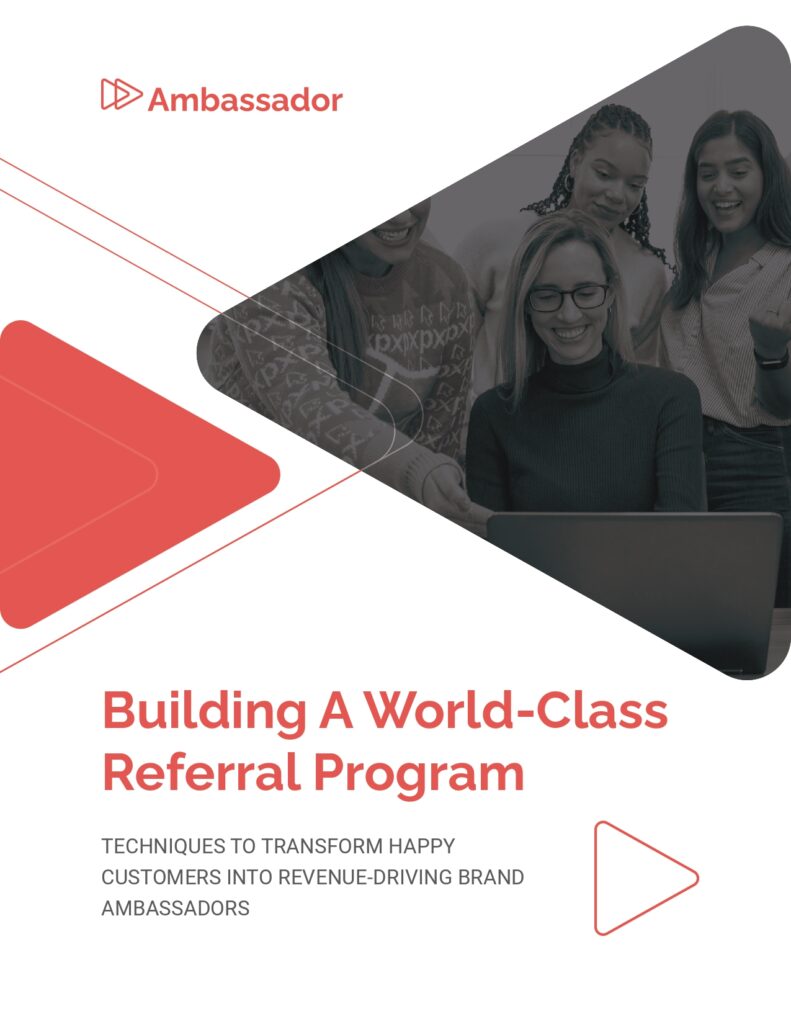In almost every industry, referrals are the gold standard of customer acquisition. Research has repeatedly shown that referred leads close faster, buy more, and stay longer – all with significantly less effort and at a much lower CPA than non-referred prospects.
So, how can brands turn their customers into one of the most powerful selling and marketing tools in their growth strategy?
Our marketing experts will teach you how to leverage existing customers to generate word-of-mouth, improve brand advocacy, and, ultimately, drive revenue growth.
Overview
The only platform built for full-funnel engagement. From referral to retention, Ambassador helps brands grow through programs that activate, automate, and scale customer relationships.
Solutions
Launch referral, affiliate, and loyalty initiatives with built-in workflows and automation.
Your Loyalty engine for smarter engagement, feedback, and growth.
Create personalized, goal-oriented communication across acquisition, retention, and advocacy.
Trigger personalized gift cards, loyalty perks, and payouts—seamlessly delivered through customizable reward flows.
An integrations layer that seamlessly connects to your technical, commerce, and financial stacks.
Vaults, ledgers, and audit-ready systems ensure every engagement is secure, trackable, and aligned to business goals.
Channels
Coordinate every message—across email, SMS, WhatsApp, and more—so your channels work as one system, not siloed tools.

